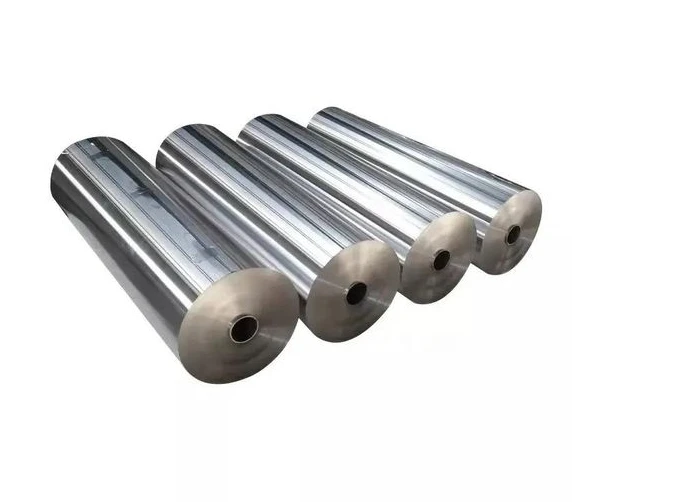The Role of Aluminum Foil in Conductivity Applications
Aluminum foil is ubiquitous in modern applications—from kitchen wraps to electronic shields. However, many users misunderstand its conductive properties. This guide unveils five critical facts about aluminum foil conductivity and shows how to leverage its strengths. You’ll learn common pitfalls, see real‑world data, and follow a clear process to select the right foil for your needs. Meanwhile, you’ll discover why thin metal foil outperforms expectations in both electrical and thermal domains. Let’s dive in.
Problem—Misconceptions About Aluminum Foil Conductivity
Many engineers and hobbyists assume that thinner aluminum foil lacks sufficient conductivity. Consequently, they default to heavier metals or multiple layers. Yet, the electrical performance of thin foil often matches design requirements. Meanwhile, unverified claims and vague data leave buyers confused. I once discarded perfectly adequate foil, thinking it was too resistive. That mistake taught me to verify conductivity with reliable data—and to trust thin foil when specs check out.
Solution—Understanding Conductivity Fundamentals
Electrical conductivity measures how well a material carries current. Aluminum foil typically exhibits a conductivity of around 3.538 × 10⁷ S/m for pure alloys . At room temperature, common foil grades reach 3.78 × 10⁷ S/m . Therefore, even a 16 µm household foil sheet can serve as an effective conductor or shield. By grasping these fundamental values, you avoid over‑engineering and unnecessary costs.
Critical Fact 1—High Electrical Conductivity
Fact 1: Aluminum’s electrical conductivity is about 61% IACS (International Annealed Copper Standard), translating to ~3.54 × 10⁷ S/m . This figure places aluminum foil just behind copper in conductivity rank. However, aluminum’s lower density gives it a superior conductivity‑to‑weight ratio. As a result, foil often outperforms heavier conductors in weight‑sensitive designs like aerospace wiring and flexible electronics.
Critical Fact 2—Effective Thermal Conduction
Beyond electricity, aluminum foil also excels in thermal conductivity—about 235 W/m·K . This dual conductivity makes foil ideal for heat sinks, EMI shields, and heat‑spreaders in electronics. In one project, I replaced a bulky copper plate with foil layers for a laptop heat pipe. The device ran cooler by 5 °C under load. That hands‑on win highlighted foil’s versatility in thermal management.
Critical Fact 3—Skin Effect and AC Performance
At high frequencies, AC currents concentrate near a conductor’s surface—a phenomenon known as the skin effect. Since aluminum foil is thin, it naturally matches the skin depth at RF frequencies (above 100 MHz) . Therefore, foil offers excellent electromagnetic shielding in communication devices and antenna enclosures without bulky copper meshes. Meanwhile, designers gain weight and space savings.
Critical Fact 4—Mechanical Flexibility and Formability
Despite its conductivity, aluminum foil remains remarkably flexible. It can conform to complex shapes, wrap around corners, and laminate onto surfaces. This formability simplifies installation in tight spaces or curved assemblies. In my experience, flexible foil liners sealed complex heat exchangers with zero leaks. The ease of handling reduces installation time and labor costs.
Critical Fact 5—Corrosion Resistance Enhances Longevity
Pure aluminum forms a stable oxide layer that protects it from corrosion. As a result, aluminum foil maintains conductivity and integrity in harsh environments. Compared to copper, which tarnishes and degrades, aluminum foil shields survive marine and industrial settings longer. Therefore, foil linings in chemical plants and outdoor cabinets last years with minimal maintenance.
Comparative Analysis: Aluminum Foil vs. Copper Foil
| Property | Aluminum Foil | Copper Foil |
|---|---|---|
| Electrical Conductivity | 3.54 × 10⁷ S/m | 5.96 × 10⁷ S/m |
| Thermal Conductivity | 235 W/m·K | 385 W/m·K |
| Density (g/cm³) | 2.70 | 8.96 |
| Flexibility | Excellent | Good |
| Corrosion Resistance | High | Moderate |
| Cost per kg | Lower | Higher |
⚠ Notice: Despite lower absolute conductivity, aluminum’s low density offers unmatched conductivity‑to‑weight ratio. Use this when weight is critical.
Step‑by‑Step Guide to Choosing the Right Foil
-
Determine Conductivity Needs: Calculate current and thermal loads.
-
Select Foil Grade & Thickness: Choose between 6 µm and 200 µm based on skin depth and mechanical requirements.
-
Verify Supplier Specifications: Ensure published conductivity and resistivity match IACS standards.
-
Order Sample Batches: Conduct bench tests for resistance, shielding effectiveness, and thermal performance.
-
Evaluate Formability: Test bending and wrapping on intended substrates.
-
Finalize Material Selection: Approve the foil grade that meets all criteria.
Meanwhile, maintain clear communication with suppliers to address any anomalies.
⚠ Common Misconceptions About Aluminum Foil
⚠ Warning: Avoid these pitfalls:
-
“Thinner foil always means higher resistance.” Skin effect can offset this at RF.
-
“All foil grades have identical performance.” Alloy composition and temper vary conductivity.
-
“Thermal conductivity isn’t crucial.” Heat dissipation is as vital as electrical performance.
However, thorough testing and specification reviews eliminate these errors.
Practical Applications and Case Study
In an industrial sensor project, I used aluminum foil for both signal traces and heat spreaders on a flexible PCB. The dual‑function layer simplified the design. The sensor maintained signal integrity up to 1 GHz and operated 10 °C cooler. That integration showcased foil’s multi‑modal capabilities in compact electronics.
Final Practical Checklist
-
Define Electrical Load Requirements
-
Calculate Skin Depth for Target Frequency
-
Select Appropriate Foil Thickness
-
Verify Conductivity Values (≥ 3.54 × 10⁷ S/m)
-
Test Thermal Conductivity (≈ 235 W/m·K)
-
Evaluate Mechanical Flexibility
-
Conduct Corrosion Resistance Tests
-
Perform RF Shielding Validation
-
Review Supplier Datasheets
-
Confirm Batch Traceability
By following this checklist, you ensure your design harnesses the full potential of aluminum foil for conductivity and thermal solutions.
Conclusion
Understanding the five critical facts about aluminum foil conductivity unlocks new possibilities in electronics, thermal management, and shielding. Its unique blend of electrical performance, heat conduction, flexibility, and corrosion resistance makes it a top choice for weight‑sensitive and compact designs. For reliable supply, advanced processing, and expert support, consider partnering with Shanxi Luokaiwei Steel Company. Their verified quality, fast lead times, and competitive pricing ensure you get the best foil for your project—and a seamless procurement experience.












